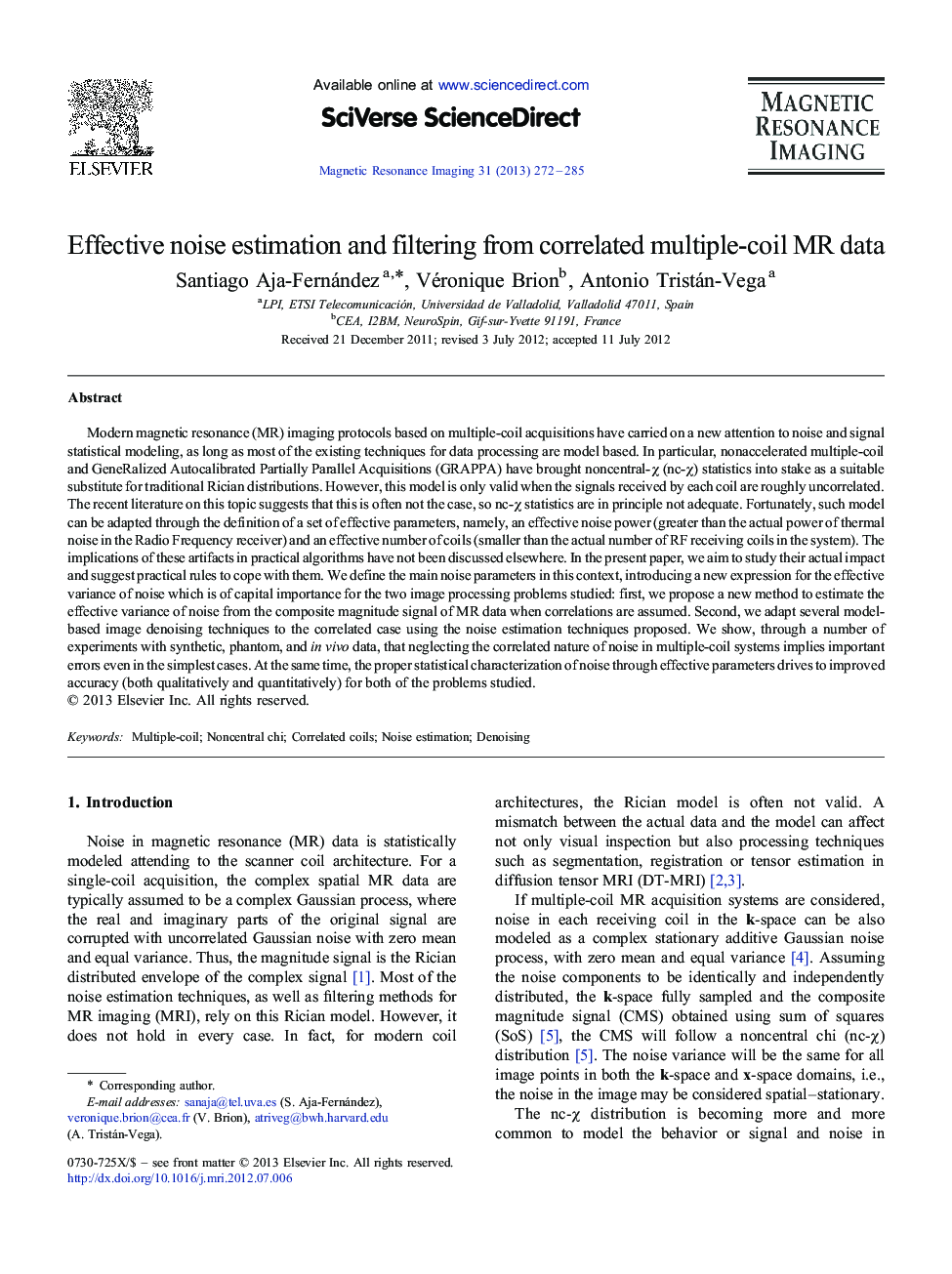| Article ID | Journal | Published Year | Pages | File Type |
|---|---|---|---|---|
| 1806633 | Magnetic Resonance Imaging | 2013 | 14 Pages |
Modern magnetic resonance (MR) imaging protocols based on multiple-coil acquisitions have carried on a new attention to noise and signal statistical modeling, as long as most of the existing techniques for data processing are model based. In particular, nonaccelerated multiple-coil and GeneRalized Autocalibrated Partially Parallel Acquisitions (GRAPPA) have brought noncentral-χ (nc-χ) statistics into stake as a suitable substitute for traditional Rician distributions. However, this model is only valid when the signals received by each coil are roughly uncorrelated. The recent literature on this topic suggests that this is often not the case, so nc-χ statistics are in principle not adequate. Fortunately, such model can be adapted through the definition of a set of effective parameters, namely, an effective noise power (greater than the actual power of thermal noise in the Radio Frequency receiver) and an effective number of coils (smaller than the actual number of RF receiving coils in the system). The implications of these artifacts in practical algorithms have not been discussed elsewhere. In the present paper, we aim to study their actual impact and suggest practical rules to cope with them. We define the main noise parameters in this context, introducing a new expression for the effective variance of noise which is of capital importance for the two image processing problems studied: first, we propose a new method to estimate the effective variance of noise from the composite magnitude signal of MR data when correlations are assumed. Second, we adapt several model-based image denoising techniques to the correlated case using the noise estimation techniques proposed. We show, through a number of experiments with synthetic, phantom, and in vivo data, that neglecting the correlated nature of noise in multiple-coil systems implies important errors even in the simplest cases. At the same time, the proper statistical characterization of noise through effective parameters drives to improved accuracy (both qualitatively and quantitatively) for both of the problems studied.
